Intel 3D XPoint Optane SSD DC P4800X Performance Preview
Introduction
The elusive 3D XPoint non-volatile memory technology is finally ready. Well, kind of. You see, we don't actually have it set up in our lab yet. Intel has a keen interest in keeping its new progeny under the strictest of wraps, so we weren’t actually allowed to take possession of the 3D XPoint-powered ‘Cold Stream’ Optane SSD DC P4800X. Instead, the company offered us an opportunity to remotely test the drive in a top-secret lab tucked away on its Folsom, CA campus. Of course, we had to get our hands on the hottest storage device ever, if only virtually. And in the end, we came away with some impressive preliminary numbers.
Intel's Optane SSD DC P4800X is destined for the data center, where it'll introduce game-changing (I don’t use those words lightly) performance. If Intel follows its time-honored tradition of releasing enthusiast versions of its enterprise SSDs, Optane should land on a desktop PC near you before long.
Optane is Intel's all-encompassing brand name for the collection of technologies, including 3D XPoint media, memory, storage controller, interconnects, and drivers, that power the DC P4800X. Micron also has its unique 3D XPoint-based QuantX products headed to market soon, as well.
Intel and Micron developed 3D XPoint for more than a decade in a skunkworks-type project that spawned the world's first new productized memory since 1966. System memory has always fallen into separate, well-defined classes. Short-term memory, which is usually DRAM but also includes other flavors like SRAM, offers the best performance. Unfortunately, as a general rule (there are rare exceptions), it doesn’t retain data after it loses power.
Specifications
MORE: Data Center M.2 SSD 101
MORE: SMR (Shingled Magnetic Recording) 101
Storage is a form of persistent memory, meaning it retains data without power. It comes in many different forms, such as SSDs, HDDs, and tape (among others). Unfortunately, storage's persistence comes at the expense of performance. A massive price and density gulf also lay between the two mediums.
Get Tom's Hardware's best news and in-depth reviews, straight to your inbox.

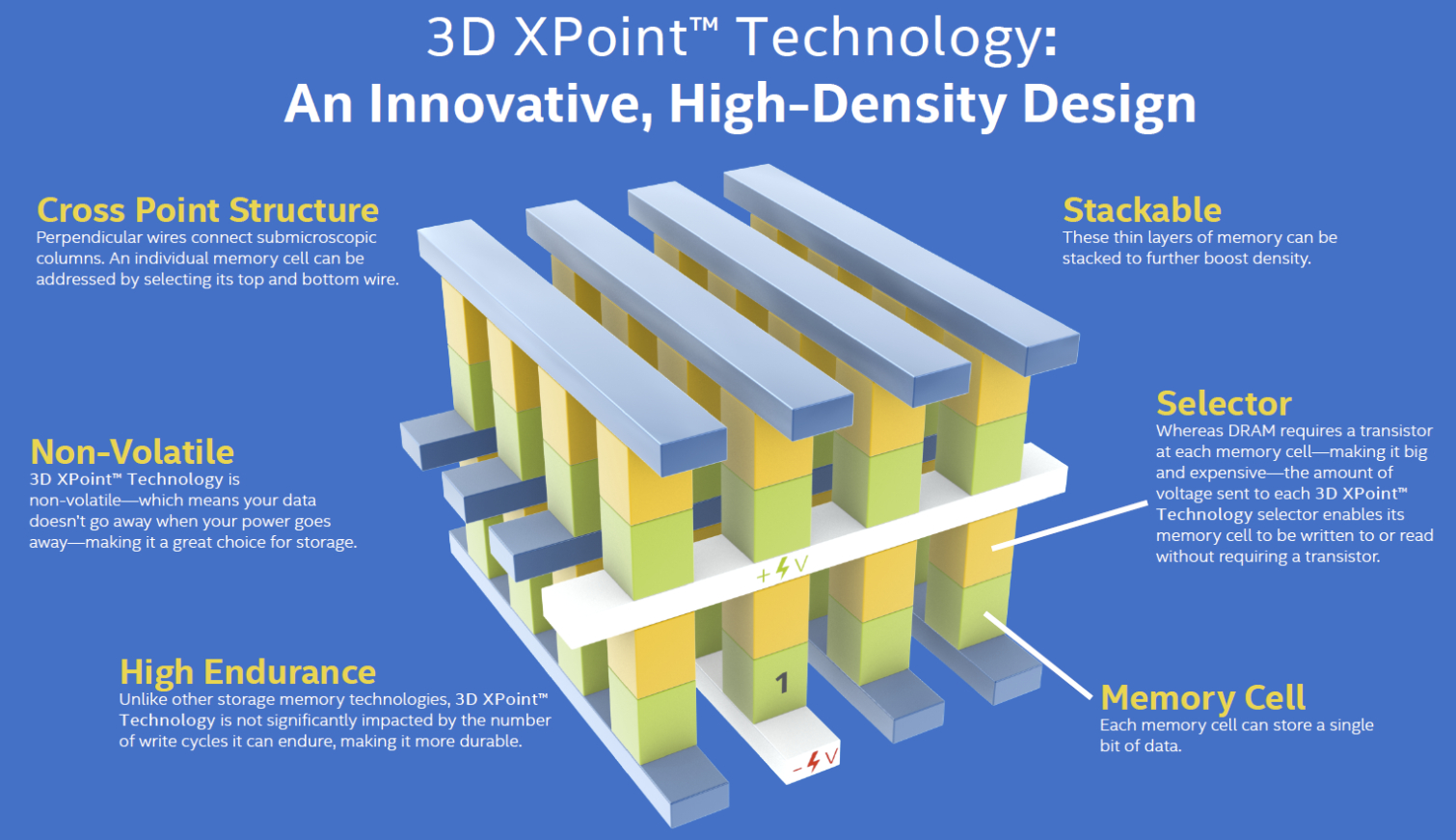
3D XPoint is designed to bridge the gap between NAND and DRAM, but it's a lot more affordable than DRAM and offers more density. It’s also faster than NAND and provides more endurance. Because of 3D XPoint's persistence and high performance, it can serve in both memory and storage roles, slotting into the new “storage-class memory” category.
Intel and Micron announced 3D XPoint back in July 2015 with a projected ship date of “12-15 months.” Obviously they didn’t make that launch window, so there were apparently hurdles along the way. Neither company is particularly forthcoming with information about 3D XPoint, and we still don’t know exactly what it is, even though products are on the cusp of general availability. We’ve done plenty of investigation and surmise, like many industry analysts, that it’s some flavor of PCM (Phase Change Memory). There’s plenty of evidence to support this hypothesis, and most of it is condensed into our 3D XPoint: A Guide To The Future Of Storage-Class Memory article. Give it a read if you'd like more detail on every facet of the new technology.
A Cold Stream Blows In
When we say Intel is holding details close to its chest, we aren't exaggerating. The company wouldn't even give us access to the DC P4800X's manual, which makes it difficult to cover some of the drive's specifications, since they aren't well-defined. We do know that it provides 10 microseconds of latency, which is a 10x reduction compared to NAND. Random 4K read/write performance is rated at up to 550,000/500,000 IOPS, respectively. In fact, the DC P4800X provides up to 500,000 IOPS with a 70/30 mixed read/write workload, easily making it the fastest SSD we've ever tested.

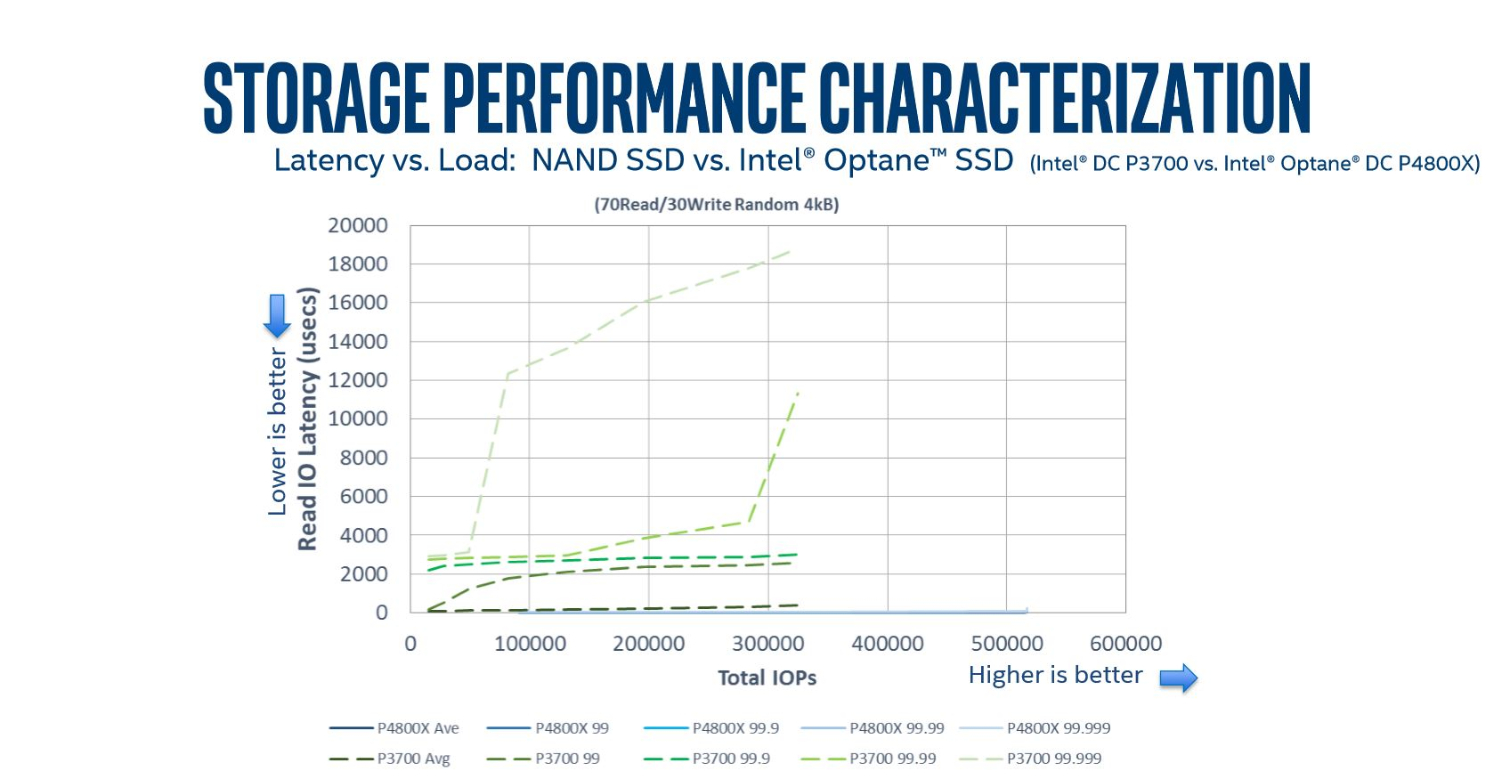


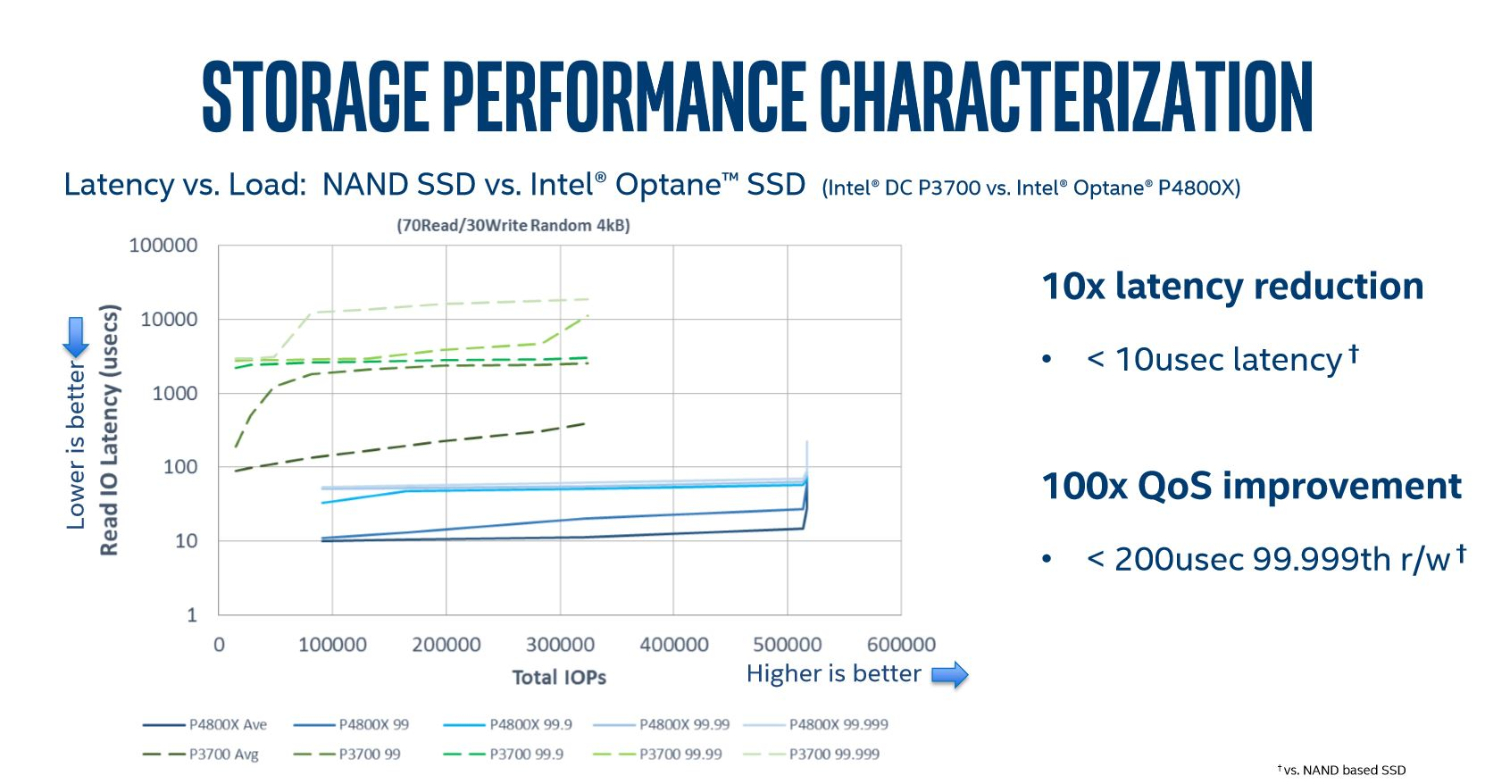


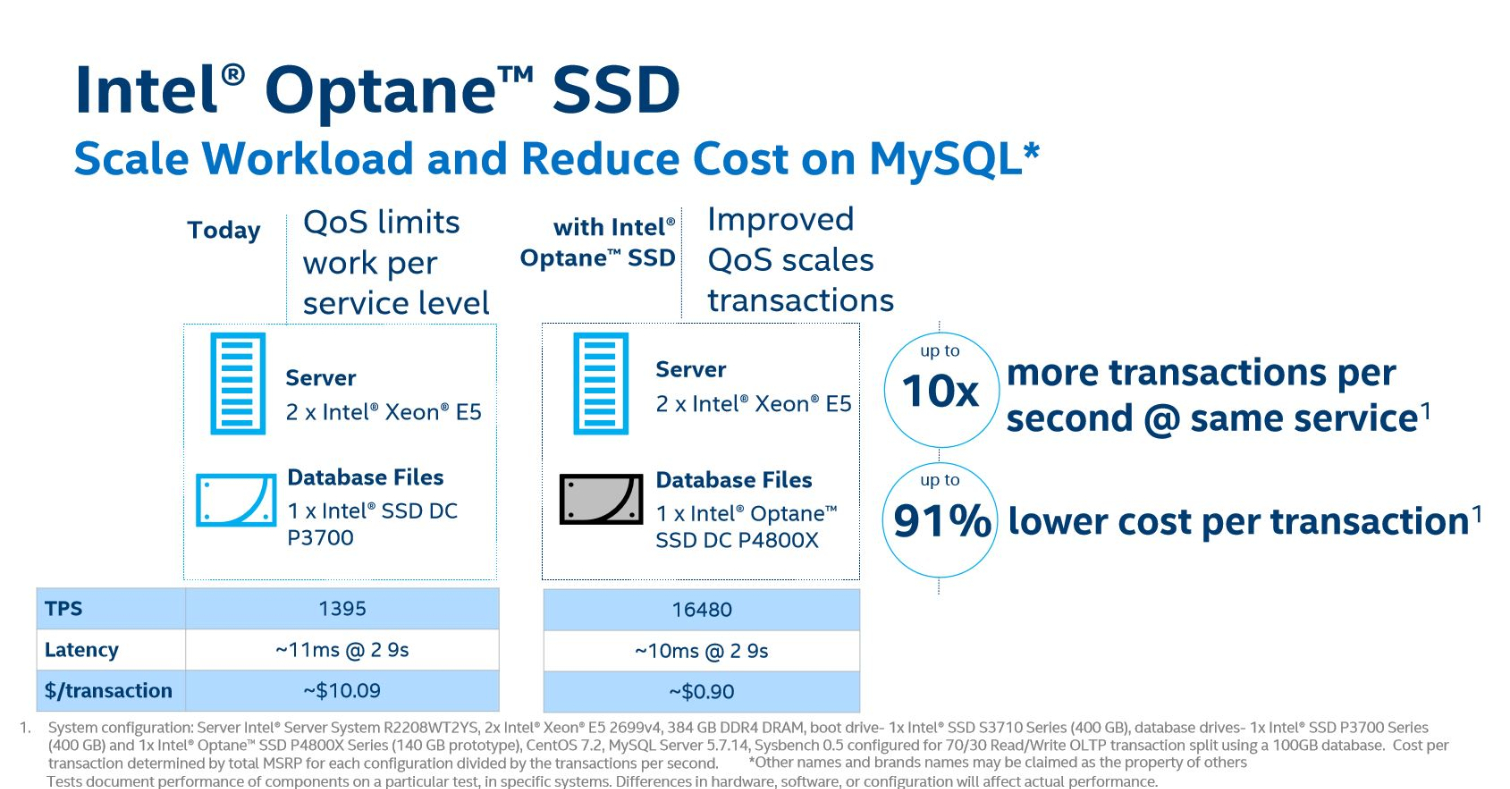
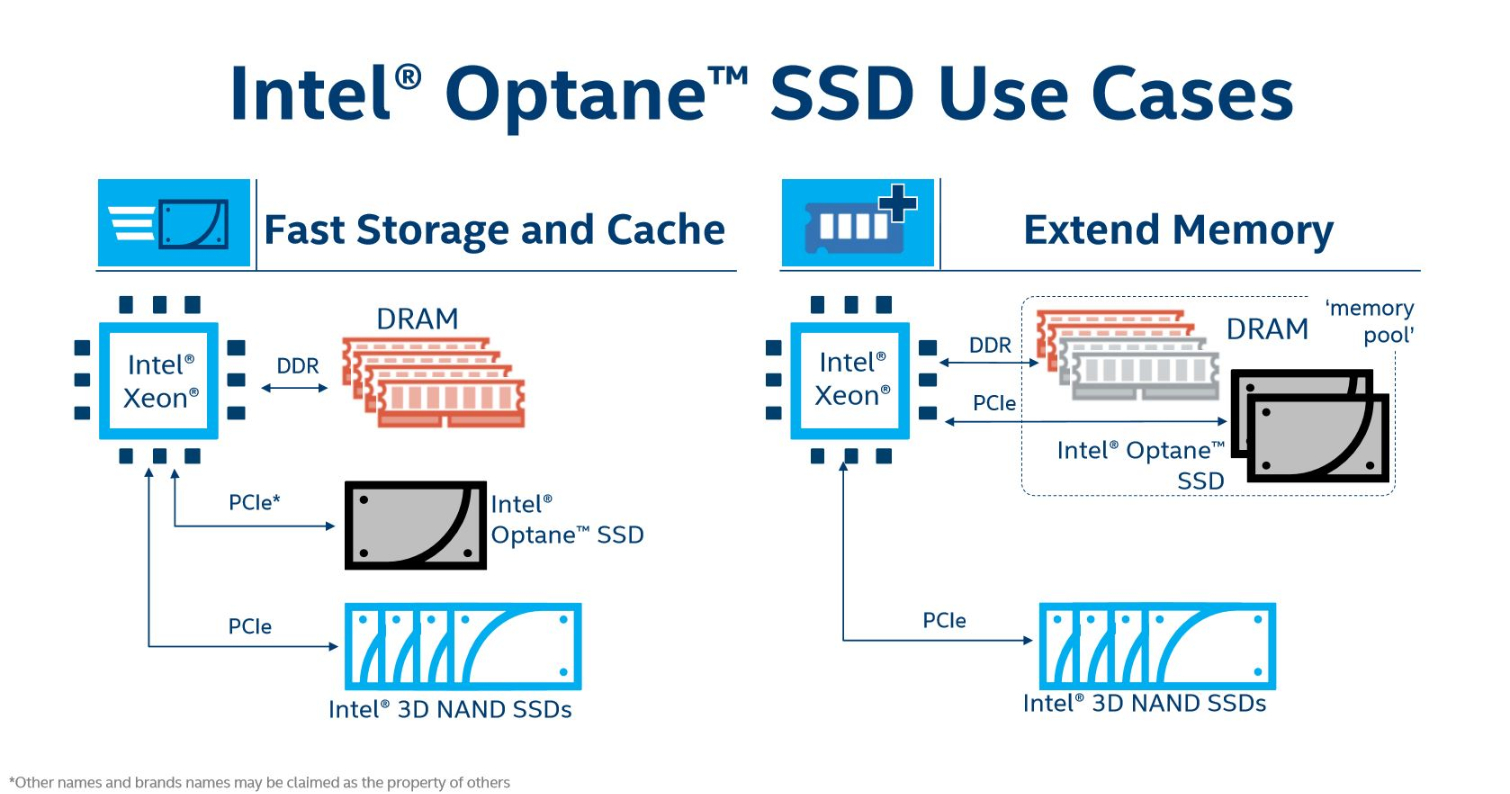

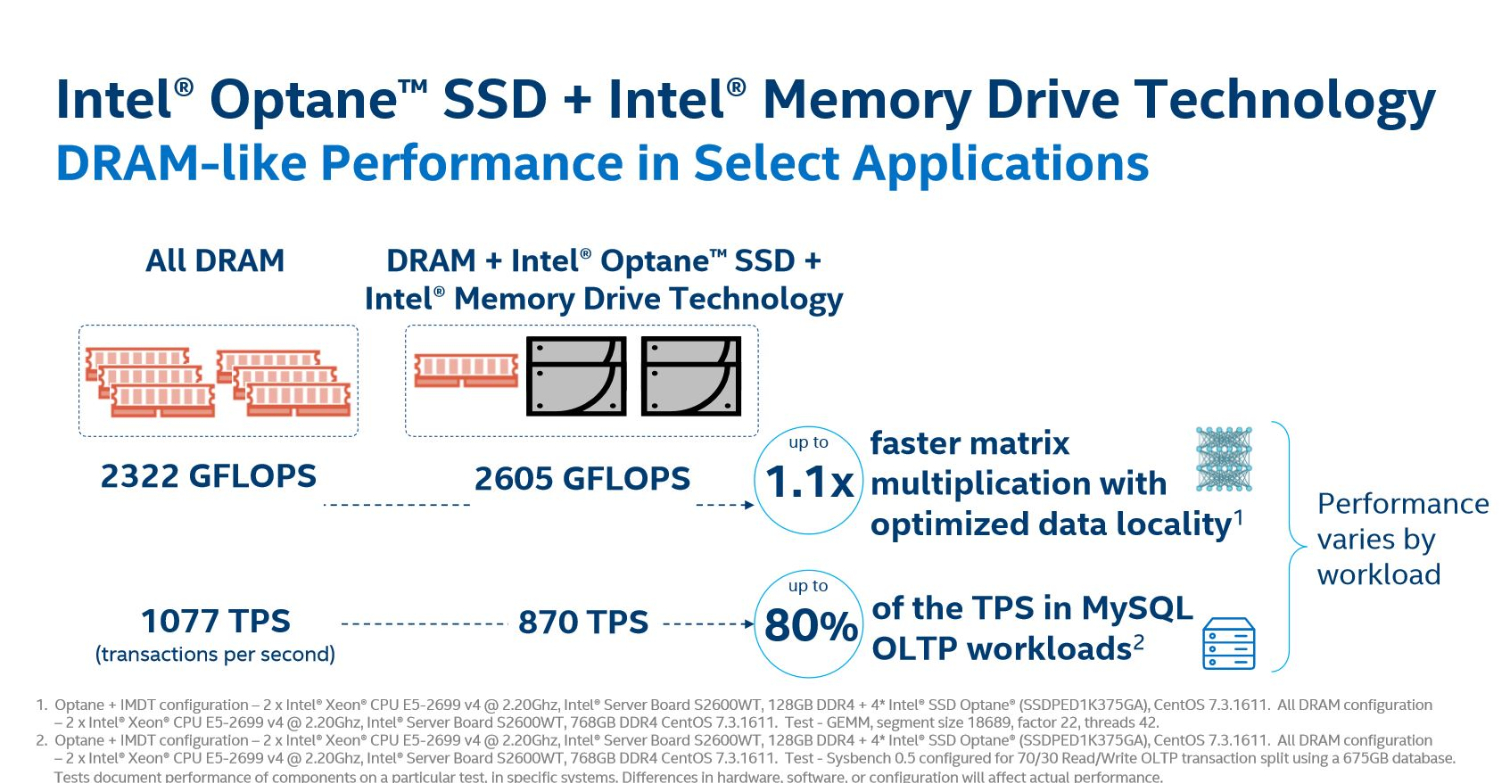




To be sure, the DC P4800X provides more than enough performance to satisfy any transactional workload, most of which involve small chunks of random data. Intel and Micron, through their IMFT partnership, focused on tailoring 3D XPoint to provide the most performance possible at low queue depths. This is in stark contrast to the SSD industry's habit of highlighting best-case results under heavy load. These somewhat misleading specifications are prevalent because NAND-based devices are inherently parallel, so you can't extract their full potential without those demanding loads, which simply aren't realistic for most of us.
In the real world, from the data center to your desktop, applications only generate light workloads that rarely stress the storage device enough to reach beyond a queue depth of four to eight. Never mind the QD256-based specs attached to many SSDs. The DC P4800X provides explosive performance at low queue depths, and then emphasizes other important attributes, such as quality of service (QoS). We'll cover those characteristics in our test results.
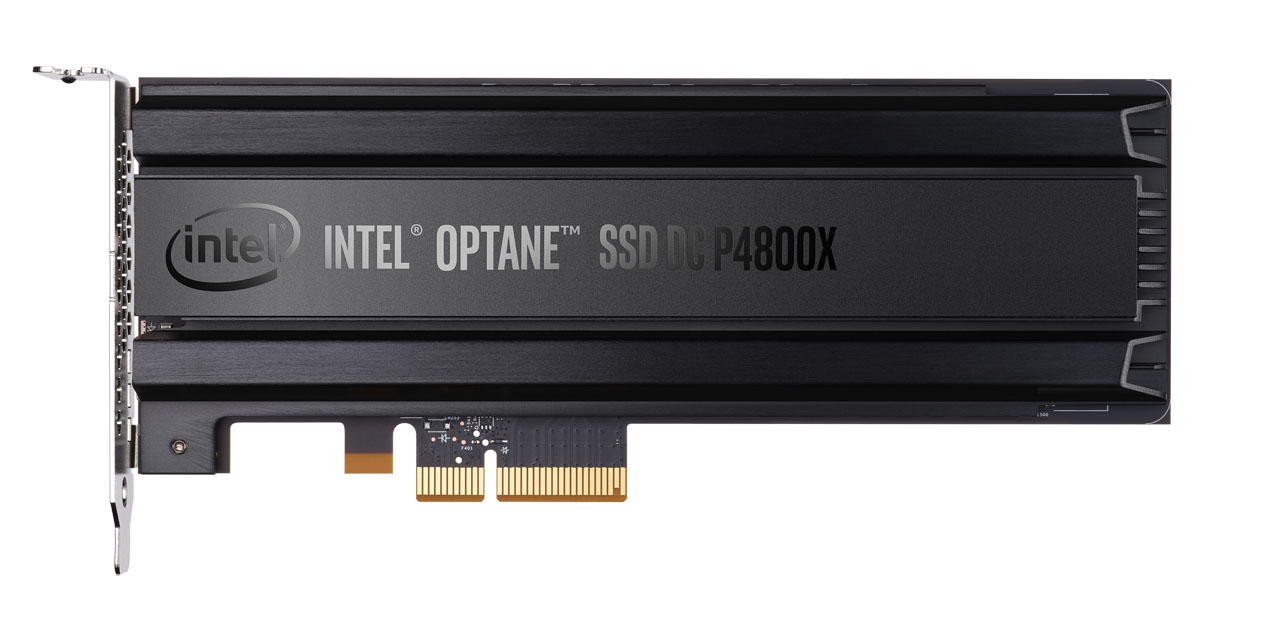

The DC P4800X debuts as a 375GB add-in card that communicates via NVMe over a four-lane PCIe 3.0 link. The relatively narrow pipe restricts raw throughput, but it provides plenty of room for the latency-sensitive random workloads. Intel has 750GB and 1.5TB AIC and U.2 models on the roadmap for the second half of this year. The 375GB model sells for $1520, or $4.05 per GB. Of course, this is far more expensive than the typical enterprise-class SSDs that dip below $1.50/GB. Then again, the P4800X's price-to-performance ratio is also a lot more impressive. The speedy media can even be used as a supplemental pool of memory to complement DRAM, yielding a tremendous cost advantage over high-capacity DIMMs.
The NVMe DC P4800X employs 20nm 128Gb (16GB) 3D XPoint dies with CMOS Under the Array (CuA) technology, which increases density by placing the control circuitry under the storage array instead of on the periphery. The SSD employs a custom seven-channel Intel NVMe ASIC that addresses up to four dies per channel, or 28 total die. The 375GB model provides up to 30 DWPD (Drive Writes Per Day) of endurance, which we'll examine on the next page.
MORE: Best Enterprise SSDs

Paul Alcorn is the Editor-in-Chief for Tom's Hardware US. He also writes news and reviews on CPUs, storage, and enterprise hardware.
-
Geekwad A true signal that raw processing power is played out.Reply
Storage of all kinds and an increased focus on parallelism in software implementations is more exciting. -
anbello262 I can't wait to have the consumer version. I can cleary see in a few years ssd replacing hdd for storage, and xpoint replacing ssd for OS/boot/programs.Reply -
shrapnel_indie Call me when the testing is completed with real hardware on hand. Its too easy to simulate in a virtual environment. (Not saying they did, but the potential exists.) The numbers are nice though.Reply
